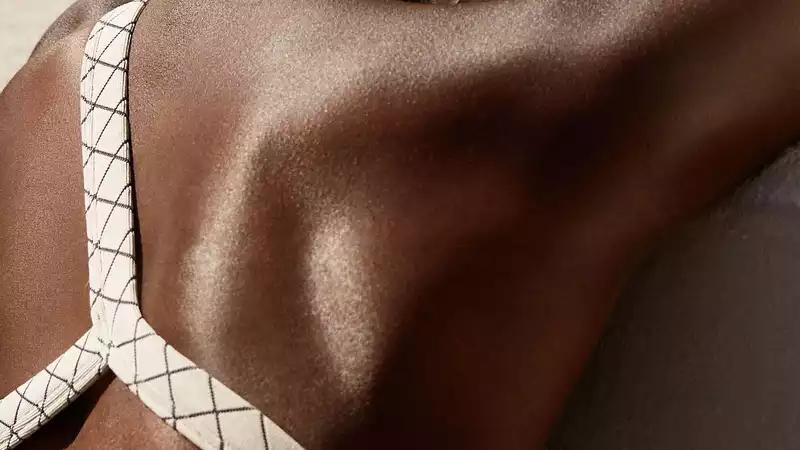
Finally, SPF for all
I didn't wear sunscreen until my mid-twenties. I am Trinidadian and Irish and tan all year round, always a deep mahogany color in August. Since my skin rarely tanned, my mother let me walk around Rockaway Beach in Queens, New York, every summer without giving me the ghost of SPF. I was grateful then, but I'm not asking you to do the same thing now. Our understanding of skin of all shades and the need to protect it from the sun has advanced dramatically. Along with that, sunscreen technology has also advanced. In fact, a look at the beauty industry today shows that the sunscreen status quo is (finally) comprehensive, multitasking, and ever expanding. Brands are using nanotechnology to make once unpalatable physical blocks easier to apply and blend. In addition, new tint breakthroughs alongside ingredients like iron oxide, which, according to dermatologist Uchenna Okereke, color-correct inflammation and work well with melanin-rich skin to help protect it from pigmentation.
Sunscreens can be chosen based on their SPF for your skin type, rather than based on what you don't like, such as whiteness or greasiness. As a general rule, physical blocks are gentler on the skin and are catching up aesthetically to chemical blocks. Let me explain the difference between the two: physical blocks use minerals such as zinc oxide and titanium dioxide to deflect both UVA and UVB rays away from the skin, whereas chemical blocks soak into the skin, absorb the UV rays, convert them to heat, and release them outside the body, Dallas dermatologist Diane Davis She explains. Because chemical blocks are placed on top of the skin, they do not clog pores or cause irritation. They also deflect heat, making them an excellent choice for people with rosacea or redness. The downside is the frequency of reapplication. Our experts recommend reapplying every two hours when outdoors or in the sun.
Even with recent advances in physical SPF, chemical sunscreens tend to be thinner, more elegant formulations that are more comfortable to apply. They also contain a wider range of active ingredients, such as avobenzone, oxybenzone, and octinoxate, explains dermatologist Adeline Kickham. (A new ingredient, Persol Shield, also known as bemotridinol, or BEMT for short, is under review by the FDA and is generating excitement in the dermatology community for its ability to block both UVA and UVB even at low concentrations.) Unfortunately, Kicam says, chemical sunscreens in general are more likely to be associated with irritation. People who are prone to allergies or have lupus or other light-sensitive conditions should stick to physical blocks, Kicam suggests. These ingredients can also clog pores, which is dangerous for acne sufferers. Nevertheless, chemical screens are resistant to perspiration and contain other ingredients, such as peptides, that can provide skin care benefits.
Whichever sunscreen you choose, the American Academy of Dermatology recommends SPF 30 or higher. 'You need to rub it in with your hands, so you're more likely to get maximum coverage in the areas you apply it to.' Davis also personally likes to use concentrated sunscreen serums or drops that can be mixed into moisturizers or foundations or applied directly to the skin. A word of caution. Rub in well. Purvisha Patel, a dermatologist in Germantown, Tennessee, and founder of Visha Skin Care, recommends applying sunscreen liberally "like icing on a cake." She also loves to use stick-on sunscreen on areas that are prone to sunburn. One method of sun care that experts warn against is using makeup that contains SPF as the only defense. Says Patel, "We generally don't wear thick makeup, so makeup with SPF isn't very effective." [According to Okereke, now that we've come this far in terms of SPF aesthetics, what comes next is an increase in sunscreens featuring antioxidants that neutralize and repair free radical damage caused by environmental pollutants. The future is bright with smarter, finer formulations that offer even more skin care benefits to us all. Now it's time for skin care.
This article appears in the Summer 2021 issue of Marie Claire.
.
Comments